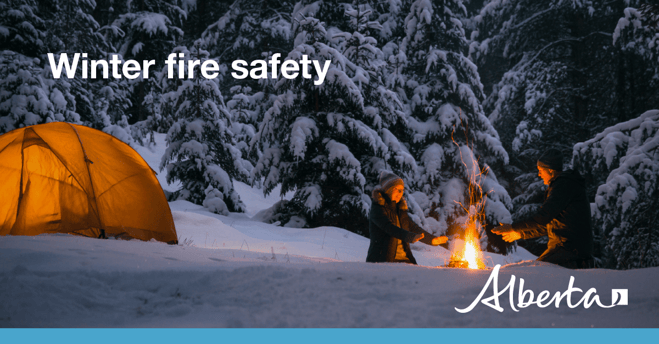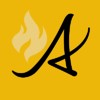
The wildfire danger level is LOW in the Fort McMurray Forest Area.
If you have a campfire, never leave it unattended. Soak the ashes, stir them and soak them again until they're cool to the touch.
If you see smoke or flame in the forest please call 310-FIRE (3473).
FORT MCMURRAY FOREST AREA WILDFIRE UPDATE
There are currently five active wildfires in the Fort McMurray Forest Area. All of them are classified as under control.
Since January 1, 2024, 101 wildfires have burned approximately 285,813 hectares (ha) in the Fort McMurray Forest Area.
MWF047 is classified as under control at 110,962 ha in size and is located 53 km east of Fort McKay, 68 km northeast of Fort McMurray, and 6 km northeast of local industrial facilities.
MWF063 was discovered on July 9 and is 60 km southwest of Camsell Portage (Saskatchewan) and 65 km northeast of Fort Chipewyan. It is classified as under control at 29,676 ha in size. This wildfire was caused by lightning.
MWF068 was discovered on July 10 and has crossed over into the High Level and Slave Lake forest area borders. It is classified as under control at 31,297 ha in size. This wildfire was caused by lightning.
MWF077 is classified as under control at 18,453 ha in size and 38 km northeast of Fort McMurray, 46 km from Fort McKay, and 6.5 km from local industrial facilities.
MWF079 is classified as under control at 7,948 ha in size and is located near the Saskatchewan border.
MWF060 is now extinguished at 27,392 ha in size.
MWF078 is now extinguished at 3,000 ha in size.
.jpg?width=1920&height=1080&name=Hiring%20firefighters%20-%20helicopter%20(landscape).jpg)
Want to make a difference in the 2025 fire season?
More seasonal positions will become available over the next few months, stay tuned!
Join a crew today by applying through one of the links below.
Find more information: Crew member, sub leader and leader, or all available Alberta Wildfire jobs.

Winter Burning
From November 1 to February 28 fire permits are not required for burning in the Forest Protection Area of Alberta. However, you are still responsible for any fires you ignite outside of the wildfire season.
Safe burning guidelines for winter:
Before You Burn:
- Winter burns should be conducted in areas with sufficient snow cover of more than 15 cm and burns must be monitored the entire time.
- Ensure smoke warning signs are in place before burning within half a mile (800 m) from a roadway. For more information on smoke management and to acquire signs, contact your local municipality. If you are outside of a municipality, contact Alberta Transportation.
- Read over the recommended practices for placement and instruction of a “Smoke Ahead” sign.
While burning:
- Have someone monitoring the burn the entire time – if it escapes, immediately report it to 310-FIRE.
- Only burn what you can control with the equipment and people you have available, and adjust your burning according to weather conditions.
- Build it right. Brush piles or debris windrows should be free of soil and with a fireguard or cleared land around it to stop the spread of fire.
After you burn:
- Spread remaining material within the pile and soak with water as required.
- Check the area and ensure both heat and smoke are no longer being produced by the pile – it should be cool to the touch.
- Check your burn site multiple times in the following weeks to ensure it has not reignited.
Smoke Safety
While winter is a safer time for burning due to reduced wildfire danger, it's still essential to take necessary precautions, such as monitoring the weather to prevent smoke from adversely affecting surrounding areas.
On particularly cold winter days, inversions and other weather factors can cause smoke from a winter burn to stay close to the ground and travel great distances. An inversion happens when cold air is trapped near the ground by a layer of warmer air above it. Inversions can cause dangerous driving conditions and impact nearby communities.
When burning in winter:
- Refrain from burning when an inversion is in place or is forecasted.
- Consult local municipalities and authorities on how to mitigate impacts when undertaking larger winter burning projects near communities or road ways.
- Actively manage burn projects to reduce disposal time and smoke impacts.
- Burning debris in stages will allow you to adapt to changing weather conditions and reduce smoke.
- Monitor weather conditions: lower temperatures and lighter wind speeds can result in stronger inversions. The ideal conditions for burning are typically days with average temperatures and wind speeds over 5 km/h.
For more information, see brush piles and windrows: safe burning practices.
CONTACT:

RELATED INFORMATION
- Alberta Wildfire
- Alberta Fire Bans
- FireSmart in Alberta
- Alberta Emergency Alerts
- Air Quality Health Index
- Wildfire Smoke and Your Health
- 511 Road Reports
- Emergency Preparation
Join the conversation on
DOWNLOAD OUR APPS
Alberta Wildfire App for Apple or Android and Alberta Fire Bans App for Apple or Android.
